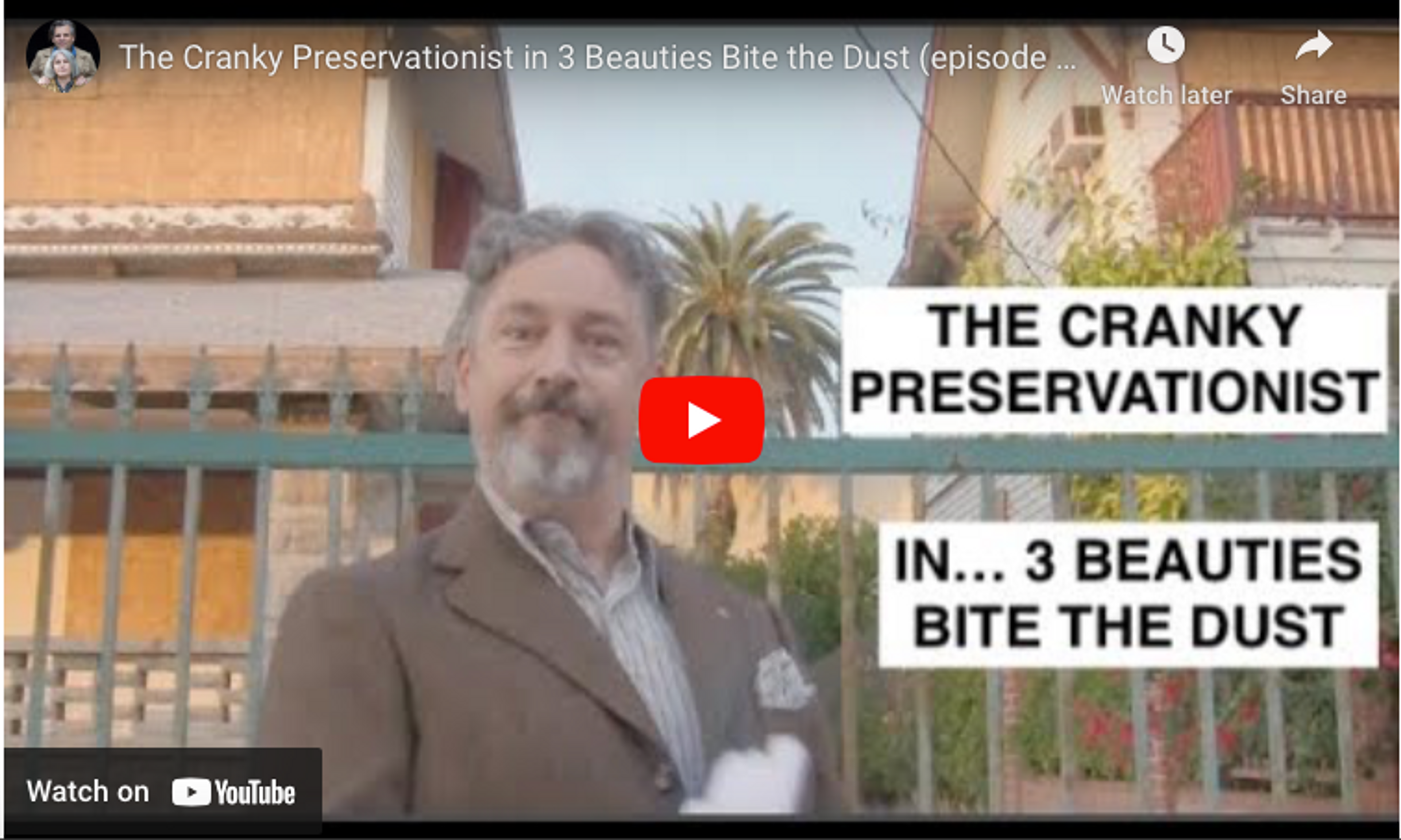Architectural historian Nathan Marsak loves Los Angeles, and hates to see important buildings neglected and abused, whether by slumlord owners or the savage public. Follow him on his urban adventures as he sees something that looks like crap, opens his yap and spontaneously lets you know exactly why this place matters.
Episode Twenty finds Nathan back in Pico-Union, a disenfranchised community of immigrants and renters that is experiencing unprecedented development-fueled displacement and demolition. On the 2700 block of West Francis Avenue, three beguiling early 20th century homes converted to multi-family housing stand boarded up and derelict, waiting for the pneumatic claw to rip them to shreds.
Your tax money in the form of HHH funds will be used to build something quick and cheap, but very profitable for the consultants, developer and politicians attached to the project.
And yeah, presumably some poor elderly people will get the chance to live in that quick, cheap structure. But West Francis Avenue and Los Angeles will be forever diminished by the loss of these beautiful homes that have grown up with the city. In a city blighted with tens of thousands of vacant lots, strip malls and oil change pits, it is a crime to turn landmarks into landfill, and once beautiful blocks into eyesores. If you’re cranky, too, let’s demand better from City Hall and the County Supervisors.
Where will the Cranky Preservationist turn up next? Stay tuned!
About Nathan Marsak
NATHAN MARSAK says: “I came to praise Los Angeles, not to bury her. And yet developers, City Hall and social reformers work in concert to effect wholesale demolition, removing the human scale of my town, tossing its charm into a landfill. The least I can do is memorialize in real time those places worth noting, as they slide inexorably into memory. In college I studied under Banham. I learned to love Los Angeles via Reyner’s teachings (and came to abjure Mike Davis and his lurid, fanciful, laughably-researched assertions). In grad school I focused on visionary urbanism and technological utopianism—so while some may find the premise of preserving communities so much ill-considered reactionary twaddle, at least I have a background in the other side. Anyway, I moved to Los Angeles, and began to document. I drove about shooting neon signs. I put endless miles across the Plains of Id on the old Packard as part of the 1947project; when Kim Cooper blogged about some bad lunch meat in Compton, I drove down to there to check on the scene of the crime (never via freeway—you can’t really learn Los Angeles unless you study her from the surface streets). But in short order one landmark after another disappeared. Few demolitions are as contentious or high profile as the Ambassador or Parker Center; rather, it is all the little houses and commercial buildings the social engineers are desperate to destroy in the name of the Greater Good. The fabric of our city is woven together by communities and neighborhoods who no longer have a say in their zoning or planning so it’s important to shine a light on these vanishing treasures, now, before the remarkable character of our city is wiped away like a stain from a countertop. (But Nathan, you say, it’s just this one house—no, it isn’t. Principiis obsta, finem respice.) And who knows, one might even be saved. Excelsior!””
Nathan’s blogs are: Bunker Hill Los Angeles, RIP Los Angeles & On Bunker Hill.
